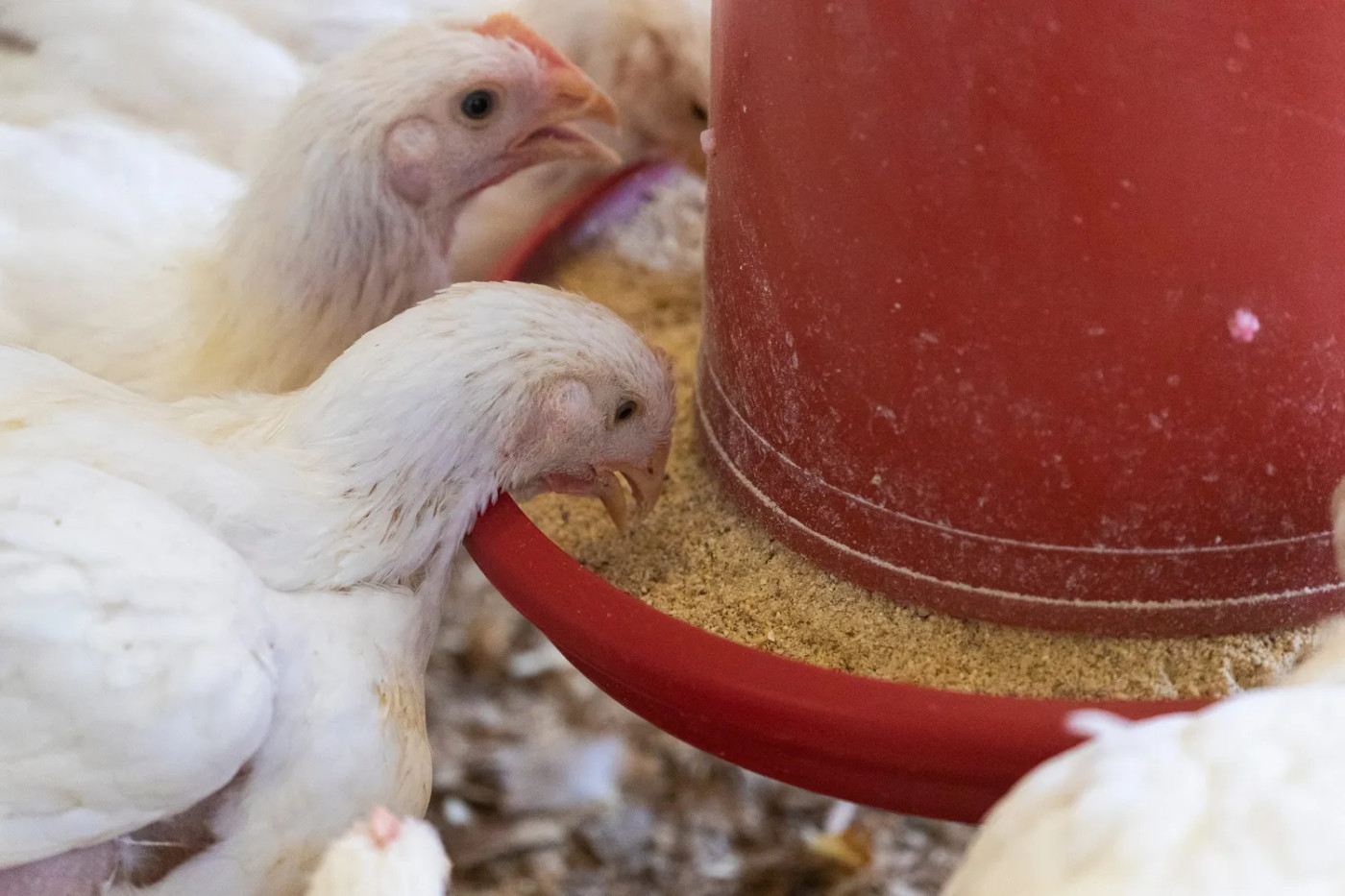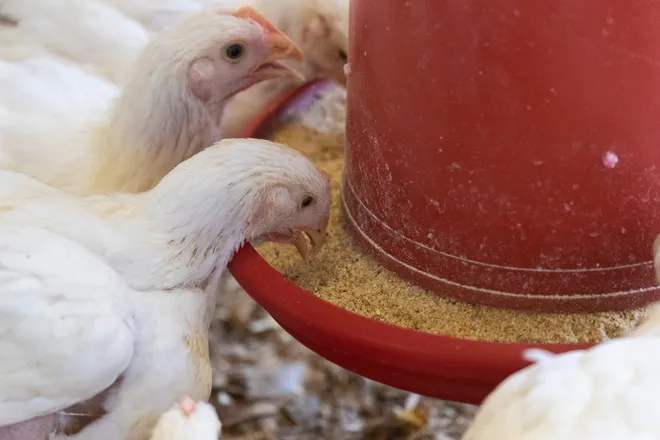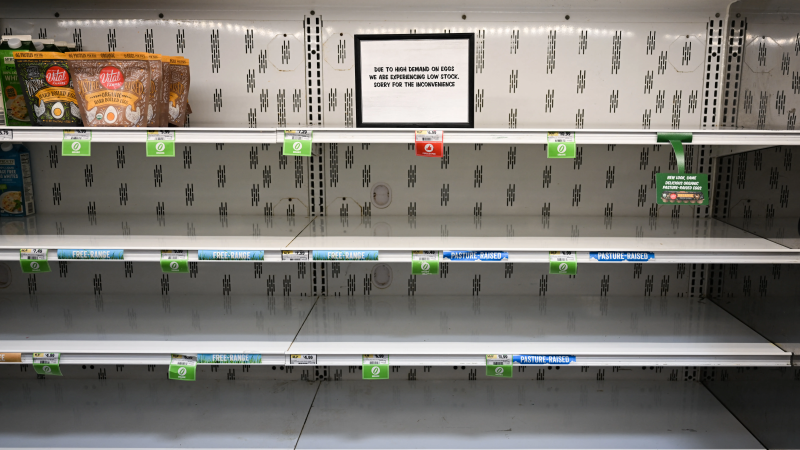
Is chicken meat next for shortages and soaring prices with egg crisis? What to know.
A shortage of chicken meat isn't on the menu for the U.S., experts said, even as eggs remain relatively expensive and in short supply nationwide.
At least not due to bird flu-related shortages.
Still, a lack of eggs and steep prices may lead consumers to move to other cheap forms of protein, which could lead to consumer-induced shortages and price increases, one expert told USA TODAY. Egg-laying hens and broiler chickens – poultry raised for meat – are different, said Will Strickland, an assistant extension agent for Louisiana State University's AgCenter.
Egg layers "usually never end up in our meat supply when they're done," said Strickland.

While both are chickens, they are very different, explained Matt Sutton-Vermeulen, principal in the agriculture and food practice of Kearney, a global strategy and management consulting firm.
"You have sprinters and you have marathoners and they're not the same," he said.
The average price of a pound of boneless chicken breast in a U.S. city was $4.10 in December, according to the Bureau of Labor Statistics. The average price in November was $4.01. In December of 2023, it was $4.08.
Current bird flu strains have been impacting egg-laying hens
While the bird flu could affect hens and broiler chickens, the current strains affect egg-laying hens at a much higher rate.
It also has to do with how the hens and broiler chickens are raised and housed.
"The amount of birds that are on a premises for our laying facilities is a much higher number than the amount of birds that on a premises at our broiler facilities," Strickland said.
For instance, some hen complexes can have 1 million-plus birds on site, while a broiler facility may have 10,000 chickens, said Sutton-Vermeulen.
So when a bird flu case shows up in a egg-laying facility and the USDA orders the birds killed, it is much more devastating to the supply, said Strickland.
"When you lose 10% of a total production system in an inelastic commodity where demand doesn't go down because the prices go up, it's really tough," said Sutton-Vermeulen.
Then, it takes much longer for new egg-laying hens to mature and be ready to produce eggs that can show up in the grocery store.
In the "best-case scenario," with no more bird losses with bird flu, it could take more than nine months for the replacements of those lost hens to have eggs that show up in grocery stores, Sutton-Vermeulen previously told USA TODAY. There have already been 14 million egg-laying hens lost in the last two weeks.
Chickens raised as broiler chickens are born and harvested usually within 30 to 60 days, said Strickland.
The short life cycle of the broiler chicken makes it a lower potential that exposure to bird flu will have a ripple effect on the supply in the industry, said Sutton-Vermeulen.
"I am not necessarily worried right now about a (broiler) poultry shortage," said Strickland. "That's not to say that something devastating couldn't happen."
There have been some turkey farms and duck operations that have had some cases of bird flu, but not enough to cause any worries of eventual shortages due to bird flu, said Sutton-Vermeulen.
Turkeys do have a higher vulnerability because it takes longer for a turkey to grow and mature, but Sutton-Vermeulen said he is not fearing a turkey shortage when demand is highest, "but we'll have to monitor that flock."
Here's what we know so far:Bird flu has caused growing problems for the last year

Could other food like beef and milk supplies get affected by shortages?
Bird flu is not having the same impact on beef and dairy cattle supplies as it is on hen-laying birds, despite a variant of the bird flu being found in dairy cows, said Sutton-Vermeulen.
"That is not a concern that I'm hearing from...the veterinarians and producers," he said.
Sutton-Vermeulen's firm, Kearney, has working relationships with people all across the food supply chains, he said.
"I don't see any other strategic vulnerabilities in the food supply system that are related to this," he said.
Are people panic-buying?:Are consumers stockpiling eggs? What to know about egg shortage
Shortages, price hikes could come from switching goods and demand
While there are not widespread worries of the egg shortages affecting the markets for chicken and other foods, there still could be shortages and price increases for other foods driven by consumer behavior, said John Clear, senior director in the consumer and retail group of global professional services firm Alvarez & Marsal.
There could be ripple effects with other products, Clear said.
"It's like protein pingpong," he said. Eggs have historically been a cheap source of protein for all income levels. But when people, especially those looking for a protein-rich diet, start looking for alternatives to eggs, they will move to the next cheapest form of protein in the retail chain, usually things like tuna, chicken meat and pork, Clear said.
Then grocers, who may temporarily run out of stock since they weren't anticipating the ripple effect, will over-order and then there will be a surplus at the store, Clear said.
It's similar to what happened to toilet paper during the COVID-19 pandemic when consumers emptied store shelves when they feared shortages. It's called the bullwhip effect, Clear said.
Also, something to a smaller effect happened in 2021 when a bird flu outbreak caused shortages on eggs, but it wasn't to this scale, Clear said.
"We've got record high prices right now, so this is more of an extreme situation," he said. "But this happened before... and the best indicator of future (consumer) behavior is past behavior."
Clear does not think consumers will transition to beef as a protein alternative as quickly as others since beef prices aren't as cheap.
Egg price increases will be bigger, last in the food service market longer
Clear also foresees the rising prices of eggs having a bigger and longer effect on the food service industry – or any provider that is not the grocery store.
Grocers can quickly change the price of eggs based on the higher costs from producers. But food service providers, from restaurants to convenience stores with prepared foods, have previous contracts for eggs in place. Those contracts don't reflect current prices. So, producers will likely prioritize getting their supplies to grocers, who can pay the higher prices than food service providers, while trying to renegotiate the food service contracts, Clear said.
But restaurants can't change their menu prices every day to reflect increasing egg prices, he said. Food service providers use eggs in myriad of dishes, sauces and for baking. He believes more will add surcharges to their egg products, like Waffle House, which announced a 50 cent surcharge.
"You're going to see a larger impact in food service for a longer time," he said.
This story has been updated to add new information.
Betty Lin-Fisher is a consumer reporter for USA TODAY. Reach her at [email protected] or follow her on X, Facebook or Instagram @blinfisher. Sign up for our free The Daily Money newsletter, which will include consumer news on Fridays, here.

